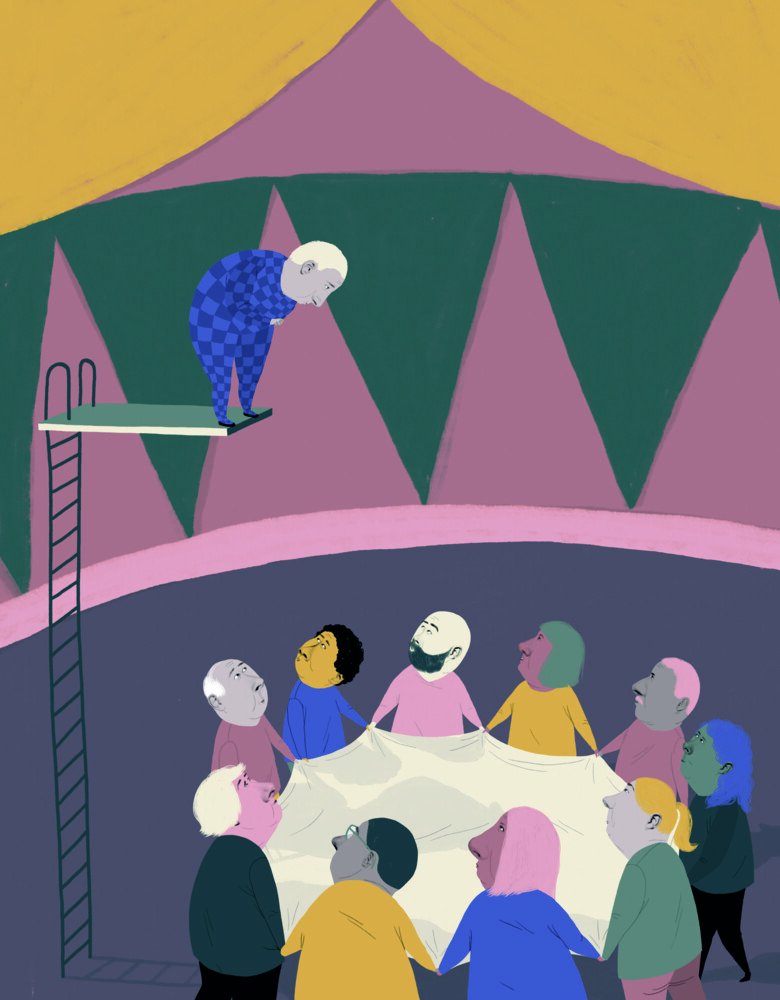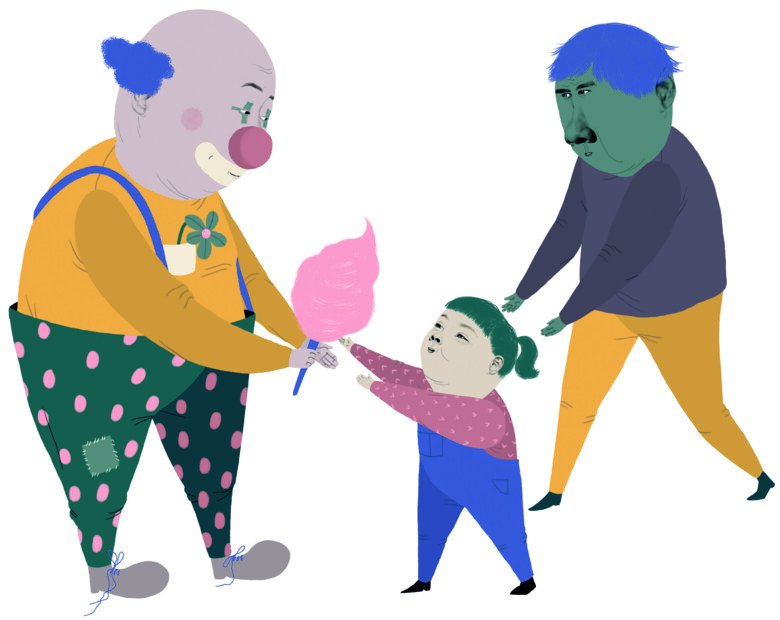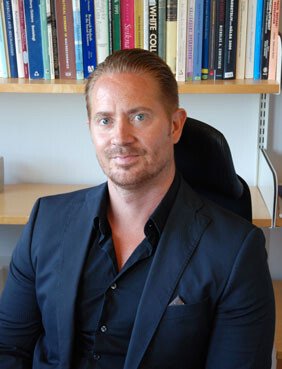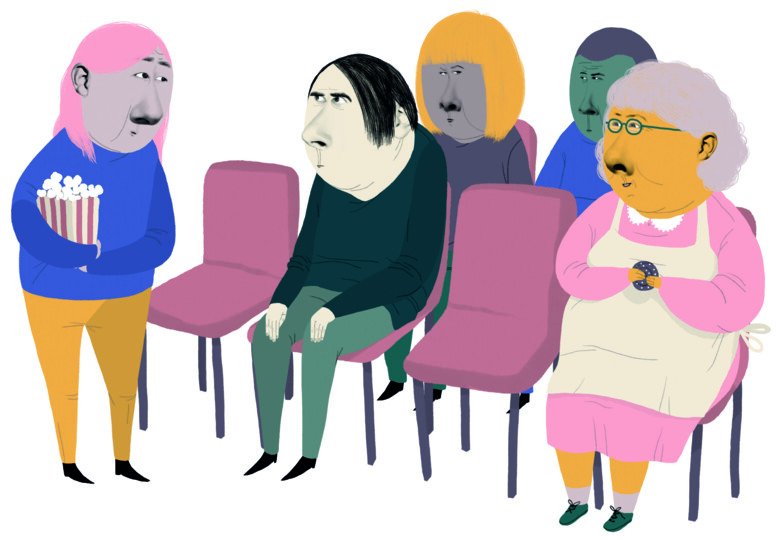Curious about trust: Who do you believe?
A cordial smile and a warm gaze – yep, that’s enough for us to make an immediate assumption that someone is trustworthy. However, some find it easier to trust than others. Researchers are trying to find out why.

Text: Annika Lund. first published in Swedish in the magazine Medicinsk Vetenskap no 1 2018
The mouth and eyes; first and foremost, it is here we look when making an initial, snap judgement of a new acquaintance about whom we know nothing. We find those who smile and look alert my attractive – and we ascribe a host of positive attributes to attractive people, including trustworthiness.
“It is a well-established fact that we make snap judgements about other people based on their faces. Other quickly assimilated surface attributes also influence us and inspire a great deal of trust, such as a lab coat. These can be described as cognitive shortcuts that provide us with an image of how dangerous or trustworthy someone is before we have had the time to speak to them. According to evolutionary psychology, this has benefited us for millennia,” says Tina Sundelin, researcher in psychology at Karolinska Institutet’s Department of Clinical Neuroscience and New York University.

Having defended her thesis almost three years ago, on how we are perceived by others when we appear tired, Tina has recently carried out a study in which 25 people were photographed on two separate occasions: on one occasion when thoroughly rested after two solid nights of sleep, on the second having slept no more than four hours on each of two previous days. Subsequently, 65 other participants in the study were asked to assess various aspects of these individuals on a scale of one to seven: how attractive were they? How interested would you be in socialising with them? How tired, healthy and trustworthy did they look?
The research subjects were less inclined to socialise with those who were sleep deprived. These individuals were described as less attractive and less healthy, although tiredness had no effect on their perceived trustworthiness. At least, not in that particular study.
Looked tired
In another study however, sleep deprived individuals were described as less trustworthy. Approximately 60 research subjects were asked to rank the same photographs, also on a scale of one to seven, but now in relation to different questions. Here, tiredness played a greater role. When the photographed individuals looked tired, they were perceived as worse bosses, less desirable employees and less trustworthy than when well-rested.
“We believe that how we perceive trustworthiness may depend on a number of factors. In a social context it may be a matter of believing that someone has your best interests at heart. However, in a competence context, perhaps trustworthiness is affected by whether one believes that someone will be capable of performing their duties, for example whether a surgeon is too tired to perform an operation,” says Tina Sundelin.

All of this however is solely a matter of how we make judgements based on first impressions. Philip Pärnamets is working on a research collaboration between Karolinska Institutet’s Department of Clinical Neuroscience and New York University and, together with colleagues, has studied how trust develops in human relationships. This project measures trust, while the face assessment study measures trustworthiness.
“The trust we are studying is a behaviour. We investigate how much trust someone actually places in another person and what influences this behaviour. This is a matter of learning, about how we adopt and adapt our behaviour based on gaining new knowledge,” explains Philip Pärnamets.
The measurement tools are various computer games, primarily The Trust Game. In this game, research subjects receive a fictitious sum of money from the research leader, who at the same time presents the rules of the game; every penny that the subject donates to their counterparty will be multiplied to produce a profit. The counterparty is then at liberty to return a discretionary sum.
The research subject thereby has the chance of obtaining financial benefit from their demonstrated trust, provided that the counterparty chooses to share the profit. However, at the same time, their donation also represents a risk, as the counterparty is free to choose to keep everything. Usually, there is no communication over and above these transactions.
The game is then played again from the beginning. If the research subject then donates more or less than on the first occasion, this is regarded as a measurable reflection of the change in trust.
“This is an extreme simplification of real trust behaviour, as a decision to trust someone is more complex than a simple financial transaction. It does however provide a transparent model and makes it possible to compare different studies and results,” says Philip Pärnamets.
Speed of the learning process
He is interested in what influences the speed of the learning process around trust. Why do some people repeatedly choose to donate the same amount to someone who doesn’t return the investment, while others very quickly keep a firmer grip on their wallet? Or vice versa – why do some people quickly begin sending larger amounts to those showing greater generosity, while others require a longer period to establish trust?

Some factors are already known. Among other things, it is a matter of how we perceive the counterparty’s characteristics – we find it easier to see those we find attractive as trustworthy, thus trust is established more quickly. We are also influenced by rumour and what we know about our counterparty. If we hear that someone does charity work, perhaps caring for abandoned cats, we will demonstrate trust more quickly than if we hear that they kick dogs. Even if these rumours are denied, they still influence us. An alleged dog kicker must work longer to win trust than a rumoured cat rescuer, even if we know that these are lies and they behave identically.
We trust our friends or those in our inner circle, that is to say, those we feel we belong with because, for example, we support the same football team. When we play against friends and strangers respectively, we will give more money to friends, even if a stranger acts in exactly the same way during the game.
Prejudices also affect us. Those who belong to a group we dislike will be met by a frostier reception and will be less trusted in The Trust Game.
However, our ability to trust is also influenced by our own personal characteristics. Above all, it is these that Philip Pärnamets and his colleagues are attempting to capture. What distinguishes a person or situation in which we quickly learn to trust, despite entering the encounter with a negative image?
In one game, research subjects play against a large number of figures wearing either blue or yellow shirts. Those wearing each colour behave uniformly, displaying either generosity or greed. The research subjects are left to play until they have developed a liking and dislike for the respective groups. The purpose is to create a prejudice in the research subjects.
At a later stage, the behaviour demonstrated by the figures will become random. The established prejudice will be shown to be wrong. The research subjects must then interpret and learn new information, as shirt colour no longer signals who is to be trusted.
So far, the project has demonstrated significant differences in the pace of learning. For example, subjects learn more quickly that a good person has become bad than vice versa. This suggests that trust can be more quickly destroyed than built up.
Individual differences
However, there are also clear individual differences. Some people are considerably quicker than others to learn that their preconceived notions are incorrect, and to adapt accordingly.
“A common reaction is to say something like, “I dislike Group X, but I like Person Y even though they belong to Group X”. Person Y is viewed as an exception, as pleasant despite belonging to Group X. However, in this situation there remain complications in contacts with new individuals from Group X. It takes a longer time to build trust and become friends, which is problematic in social and professional contexts. We want to understand why some people need to meet a great many people from Group X before they can shed their prejudice, while others need to meet significantly fewer,” says Philip Pärnamets.

There are a great many variables to be investigated, for example eye movements. Does it matter if our research subjects maintain eye contact while playing; does this promote trust? What happens if you add a pause for consideration of the history between the counterparties before a decision is made? What role does social anxiety play in this context? How does depression affect outcomes?
The initial stage is to describe the mechanisms involved in the process but the eventual goal is to be able to influence them. Researchers want to chisel out a version that, in simplified terms, could be called a treatment for prejudice, although Philip Pärnamets has reservations about the term treatment. This is because the intended arena is far from healthcare, in environments such as classrooms and workplaces where exercises or workshops could contribute to increased trust and improved group dynamics.
“The long-term aim is to develop measures to help people to more quickly unlearn a prejudice. Or, expressed differently, something that helps people to open themselves to meeting individuals as they are, rather than as they are expected to be,” he says.
From a health perspective
The question then is, what such measures might offer the user from a health perspective. Do we feel better if we are more trusting of and have a more open attitude to people we don’t know? Does being more trusting make us feel more secure?
– I have no idea. Actually, I would love to know, I am not aware of any studies that have investigated this at an individual level. When it comes to security, I believe that the opposite is true, that the more secure we feel, the easier it is to show trust,” says Philip Pärnamets.

Placed in a broader context, at societal level at least, levels of trust appear to have an impact on public health. This is demonstrated by research such as that carried out by Professor Mikael Rostila of Stockholm University’s Department of Public Health Sciences and Director of the Centre for Health Equity Studies, a collaboration with Karolinska Institutet**.
“There are several positive byproducts of living in a society in which we trust one another. One aspect is that it benefits the economy by lubricating agreements and transactions, and a healthy economy makes it easier to build a functioning welfare state. Another aspect is that if, for example, one has reason to fear a mafia, one may want to avoid involvement under certain circumstances and have less need to stand up for someone who requires help,” says Mikael Rostila.
There are a number of studies that show how trust between citizens correlates to trust in politicians and societal institutions. This is demonstrated when The Trust Game is played in different countries. The average Russian research subject shows less trust than the average Swede, reflecting among other things the level of corruption in each country.
Larger population studies
This is also measured in larger population studies where questions such as, “would you say that people in general are to be trusted?” are assigned different levels of agreement. In a study, Mikael Rostila compiled such questionnaires from around 36,000 respondents in 20 European countries. He then investigated how these relate to public health in each country.
The results are somewhat diffuse. Inhabitants of the Scandinavian countries are most inclined to trust people in general, most of all in Denmark. The lowest levels of mutual trust are found among citizens of the former Eastern bloc and Mediterranean countries, with Greece at the very bottom. However, self-assessed health is at its highest in Ireland, even if this is also good in the Scandinavian countries. The expected average lifespan is highest in Mediterranean countries.
However, if all data is weighed together, it is possible to demonstrate a link between the trust people show one another and a country’s public health.
What this depends on, and whether this increased trust explains better health, has yet to be established.

However, Mikael Rostila believes that this is the case, among other things because an increase in trust between people is related to increased trust in politicians and public authorities. If the citizens of a country trust their politicians and public authorities, this probably reflects an actual relationship – in all likelihood, these public bodies work for the interests of the citizens in these countries. According to his reasoning, for the benefit of all citizens.
“A high degree of equality in a society provides positive health effects for the citizens. In a society that cares less for those who have least, one will see worse health in this group. It is a matter of having a society that cares for those who lack the resources to look after their own health,” says Mikael Rostila.
Sound doubts – and healthy trust
Three tips regarding who and what one can trust, taken from the book Larmrapporten. Att skilja vetenskap från trams (Scare Stories. Separating Science from Nonsense) by Emma Frans, researcher in epidemiology at Karolinska Institutet.
Stand up to the charmers. Stop and reflect over how you would have assessed a statement had it come from someone else.
Remember Chinese Whispers. The further away you find yourself from the original source, the more likely it is that what you hear has been distorted.
Remain critical – researchers have been known to be wrong. What the combined expertise within a field says carries more weight than what an individual researcher says about their own results.
